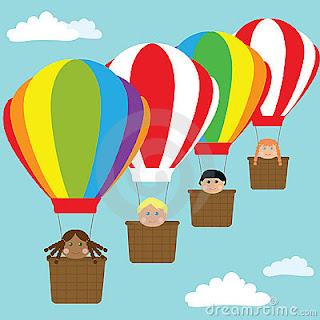Brian Crosby
Mr. Crosby teaches fourth graders from Agnes Risley Elementary School. He presents the class in a PowerPoint presentation. A large percentage of the class is second language learners. Most of the children are from lower income families and are mostly on free or reduced lunches. The majority of the children have lived in Sparks, Nevada most of their lives.
A survey is given to the fourth graders about What city do you live in? What's your address? What's your phone number? The survey is a simple one, but the fourth graders for the most part could not answer them. Why are they having such a hard time in the classroom? The obvious point is they are ESL students. If these children haven't had opportunities or means to travel and are lower income, they have not expanded their learning experiences. Schema is building on previous experiences. If the children have none, there is not a lot to build on.
Mr. Crosby gets them to think outside the box. They built a hot air balloon. First, they consult the Science book about the Atmosphere. Second, they use experiments in the classroom to help with constructing the balloon. Through this whole process, the kids where blogging and telling about these experiences. People from everywhere were commenting and interested in what they were doing in their classroom. Having an audience helped the kids see that it was important to do their best. Mr. Crosby got the local college involved in preparing audio and cameras to travel along with the hot air balloon. Meanwhile, the children were writing and using Skype to collaborate with others about the project. The children were told to write about the balloon experience. Then, they were asked to pretend they were the balloon itself. Also, they started a High Hopes blog. They asked children from around the world what they would want to see from their community or themselves. The project expanded in so many ways for this class.
Mr. Crosby makes a list of all that was accomplished during this Science experience. The children were reading and writing to learn. They were writing to clarify and share about the Hot Air Balloon project. The kids were telling a story about themselves being a balloon. Then, the amount of feedback each child got from each blog. Oral presentations were given about the project. Collaboration on the project from others online and well as locally expanded their knowledge. Always having an audience to see what the children had written on their blogs kept the kids interested. All the areas covered: Language Arts, Math, Science, Art, and gave them new learning experiences.
This is interesting because we were just talking about how children sometimes have a narrow view on subjects because they are not exposed to new experiences in our Literacy class. Children only know what is there in their view everyday. It is up to adults to show and elaborate on everyday things. Whether it be expanding language or experiences, children need a wide variety of things in which to be involved. Children of poverty just do not have those opportunities in life. Sometimes going to school and home is the only thing those children do. Turning the creative light on for these children is essential for them to learn.
A Vision of Students Today
Michael Wesch
This was an interesting video. You enter a college auditorium where a lot of classes meet. Then, there were different questions on the walls and seats, and students were holding up written questions and statements. All were pertaining to college students and were very accurate. I will list only a few:
1. What are you learning sitting here?
2. If these walls could talk, what would they say?
3. We haven't even used this 100 dollar book.
4. Will this help us in the real world?
5. We have 115 people in an average college class size.
6. Teacher's don't even know my name.
7. My neighbor never comes to class but has paid.
Then, it tells all the technological information about a typical college student. There are emails sent instead of writing papers, and how much time is spent on the phone were only a few facts. The college student does so many things in one day. These were all facts and questions brought to us by Kansas State University.
I think this was just a different way to show educators and others how the typical college classroom can be. Using technology can make the typical college classroom a different learning environment. Technology can help the college student not spend so much on books or reduce tuition by not meeting as much in class. The technology is there so use it to help educate and show the student what is out there they can use in any job.






No comments:
Post a Comment